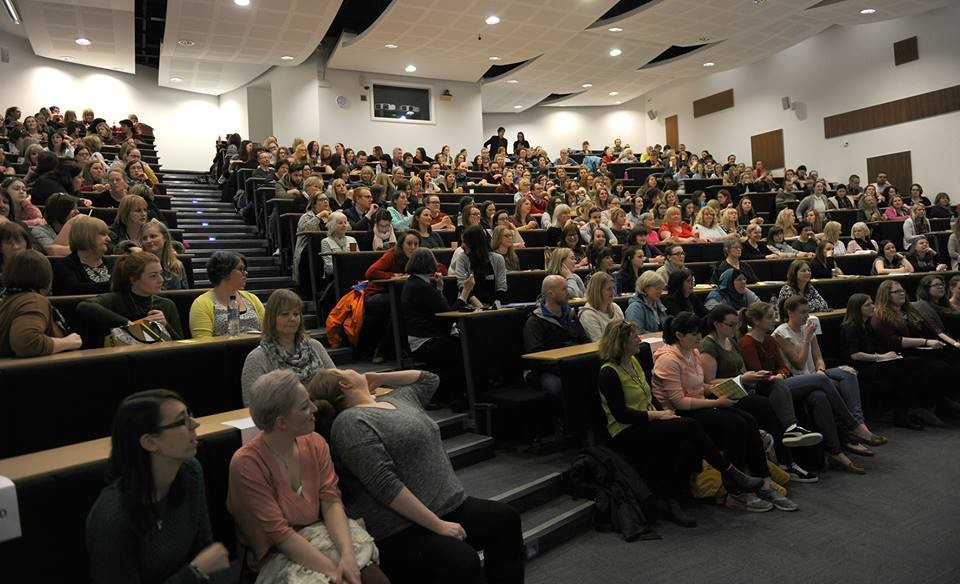For my second week back at nursery, I was asked to spend my afternoon outdoors. This request was met by my delight at the chance to have a look into some more learning in the outdoor particularly as this is an age that I have had no experience working outdoors with.
In the nursery there are no set lessons or plans for the children and they are free to play how they want, it was a chance to see what the children would do with their outdoor free play opportunities. Due to the fact that parents in this contemporary society are trying to protect their children as best as possible, this unfortunately means that children are not getting the opportunities to “exercise their bodies or to encounter the excitement and challenges of the outdoors. As a consequence an increasing number of children have weight problems. Current figures suggest that 22.9 per cent of four- and five-year-olds are either overweight or obese” (Dowling, 2010, p.172-3).
Whilst I was outside with the other practitioner, Mrs H, we got chatting about the limitations of outdoor play in the primary setting. Mrs H and myself discussed the fact that the children whilst in nursery had the choice to play outdoors in all weather conditions and the nursery practitioners had no choice but to be outdoors as well in all conditions. The only thing the children were told on this particular day was that they had to have a jacket on to play outside. However, on the other side of a fence, life for the children in the primary school was much different. Children were running round in the cold without jackets on but the minute the slightest bit of rain came on, the children were ushered indoors for the last ten minutes of lunch break. This is very common primary schools. It is almost as if teachers are worried of children getting cold whereas from what I can remember as a child as well as from the experience I had today, children tend to want to be outside regardless of the weather conditions. It was really important for me to see the difference between the nurseries practice and the primary stage practice.
This made me reflect on the idea of learning in the outdoors and the fact that the majority of teachers, regardless of this being a vital part of the CfE, only viewing outdoor education as a one of lesson when the weather is nice. However, as the nursery children proved to me – they do not care what the weather is like, as long as they are having fun, enjoying themselves and getting to play, they are more than happy to be outdoors in the rain. Robertson (2014) stated weather as one of the common reasons that teachers worry about before they start outdoor learning. This should not be a worry for teachers as on my Learning from Life placement with Adventure Aberdeen there was not a single session we considered cancelling due to the weather – the students were just equipped by the centre with appropriate clothing for the activity and weather. Therefore, when teachers are planning for an outdoor education lesson, they should advise parents in advance that the class will be going outdoors and that children will need the appropriate clothing for this and remind them we are in Scotland. Teachers also need a degree of flexibility when planning for learning outdoors as Robertson (2014) suggests as the weather may not allow for one activity but this does not mean the lesson should be cancelled but simply adapted to fit with the weather
With weather, I have experienced both extremes whilst at camp and whilst on placement. As already stated on placement, the children were out in all weather conditions from sunny days in the sea to snow sand sledging. However, at camp, the as soon as it rained – in a little bit – the children’s activities were changed from normal schedule to rainy day schedule. This meant that the children were kept indoors even when it was just drizzling. You could tell from the children that this was frustrating for them as they looked forward to the activities they had selected and these were often cancelled, normally these days were back to back. In my views, if Scandinavians countries can have children out in all weathers and this clearly has an impact on their children’s wellbeing and education then we should follow the lead of Adventure Aberdeen and the Scandinavian countries and try to get our children out in all weather conditions. In contrast to the nursery and the primary setting this is two extremes on the scale although it rather remarkably shows the same point – a little bit of rain can totally hinder the joy the children are having outdoors.
Children, in my view, should, like in the nursery, have the opportunity to have their voice heard and make decisions for themselves as to whether or not during their free play time they would like to stay outdoors in any weather, as long as they have appropriate clothing for the weather on, or if they would prefer to go inside. I understand that this is not always possible as the children need to be supervised and this would be stretching the playground assistance, there could possibly be solutions, for example the children who want to play indoors go to the games hall instead of their classrooms.
Reference
Dowling, M (2010) Young Children’s Personal, Social and Emotional Development 3rd Edn. London: Sage Publications
Robertson, J. (2014) Dirty Teaching: A Beginner’s Guide to Learning Outdoors Wales: Independent Thinking Press



